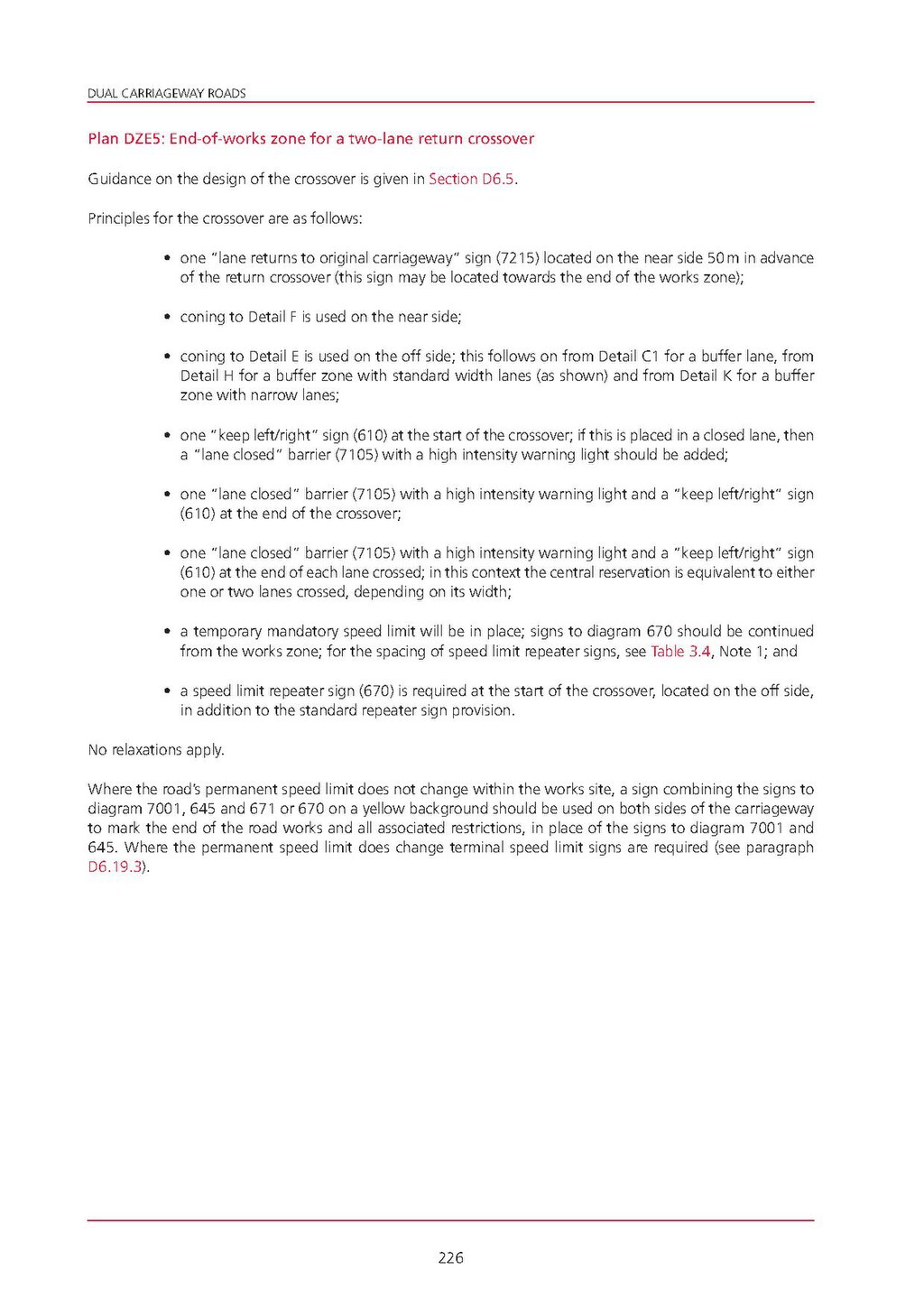DUAL CARRIAGEWAY ROADS
Plan DZE5: End-of-works zone for a two-lane return crossover
Guidance on the design of the crossover is given in Section [#D6.5|D6.5]].
Principles for the crossover are as follows:
- one "lane returns to original carriageway" sign (7215) located on the near side 50m in advance of the return crossover (this sign may be located towards the end of the works zone);
- coning to Detail F is used on the near side;
- coning to Detail E is used on the off side; this follows on from Detail C1 for a buffer lane, from Detail H for a buffer zone with standard width lanes (as shown) and from Detail K for a buffer zone with narrow lanes;
- one "keep left/right" sign (610) at the start of the crossover; if this is placed in a closed lane, then a "lane closed" barrier (7105) with a high intensity warning light should be added;
- one "lane closed" barrier (7105) with a high intensity warning light and a "keep left/right" sign (610) at the end of the crossover;
- one "lane closed" barrier (7105) with a high intensity warning light and a "keep left/right" sign (610) at the end of each lane crossed; in this context the central reservation is equivalent to either one or two lanes crossed, depending on its width;
- a temporary mandatory speed limit will be in place; signs to diagram 670 should be continued from the works zone; for the spacing of speed limit repeater signs, see Table 3.4, Note 1; and
- a speed limit repeater sign (670) is required at the start of the crossover, located on the off side, in addition to the standard repeater sign provision.
No relaxations apply.
Where the roads permanent speed limit does not change within the works site, a sign combining the signs to diagram 7001, 645 and 671 or 670 on a yellow background should be used on both sides of the carriageway to mark the end of the road works and all associated restrictions, in place of the signs to diagram 7001 and645. Where the permanent speed limit does change terminal speed limit signs are required (see paragraph D6.19.3).
226
